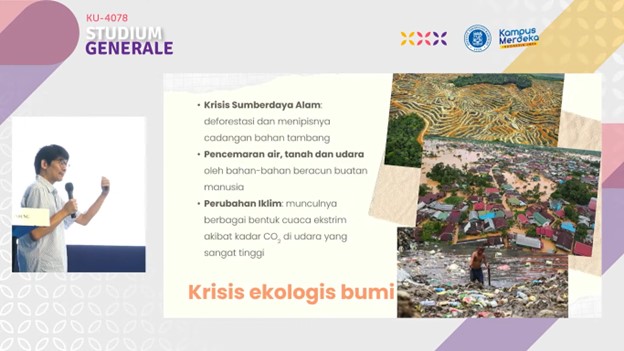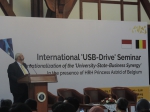SAPPK ITB Webinar: Gender Relations in the Traditional Built Environment
By Adi Permana
Editor Adi Permana

BANDUNG, itb.ac.id—The Institut TeknologiBandung's School of Architecture, Planning, and Policy Development hosted awebinar on Gender Relations in Traditional Built Environments on Thursday,December 16, 2021. Indah Widiastuti, S.T., M.T., Ph.D., from the History,Theory, and Architectural Criticism Research Group, and Tutin Aryanti, S.T.,M.T., Ph.D., from Architecture, FPTK, Universitas Pendidikan Indonesia, werepresent as the main speakers of the webinar. The event was hosted by Prof. Ir.Iwan Sudradjat, MSA, Ph.D., Chair of the Research Group of History, Theory, andArchitectural Criticism.
BANDUNG, itb.ac.id—The Institut Teknologi Bandung's School of Architecture, Planning, and Policy Development hosted a webinar on Gender Relations in Traditional Built Environments on Thursday, December 16, 2021. Indah Widiastuti, S.T., M.T., Ph.D., from the History, Theory, and Architectural Criticism Research Group, and Tutin Aryanti, S.T., M.T., Ph.D., from Architecture, FPTK, Universitas Pendidikan Indonesia, were present as the main speakers of the webinar. The event was hosted by Prof. Ir. Iwan Sudradjat, MSA, Ph.D., Chair of the Research Group of History, Theory, and Architectural Criticism.
The activity was themed "Sustainable Development in the Built Environment," according to Dr. Sri Maryati, S.T., MIP., Dean of SAPPK ITB. This was the eighth webinar in a series of nine. Meanwhile, Prof. Ir. Iwan Suradjat, MSA. Ph.D. explained History, Theory, and Architectural Criticism Research Group as well as a brief introduction to the webinar topic.
The first presentation was given by Indah Widiastuti, S.T, M.T, Ph.D., on Gender Construction in Vernacular Architecture and Settlements in Matrilineal Communities in Indonesia and Its Transformation.
According to the findings of the study, some layers served as a model for the socio-spatial organization of matrilineal kinship communities in various societies. "There are a few things about their architecture that stand out, one of which is the fact that the house belongs to female family members while the communal space belongs to male family members," Indah Widiastuti explained.
Indah described her findings of the architectural character of the Minangkabau matrilineal society and the modernization that occurred as a result of her research. "Minangkabau matrilineal life has become more patriarchal as a result of modernization," she explained.
Tutin Aryanti, S.T., M.T., Ph.D., from the Indonesian University of Education, followed with a presentation about Architecture and Gender Ideology at the Yogyakarta Sultanate Palace. She described the Harem, which is a spatial arrangement in an Arab state's palace designed to control women's views. Harems are described in the literature as places where women have visual freedom and where the ruling sultan's mother still wields power. Tutin Aryanti compared the Harem to the keputren of the Yogyakarta Sultanate Palace. Keputren is described in the literature as simple and understated. The Keputren in the Yogyakarta Sultanate Palace is also hidden and inaccessible to visitors. She went on to describe the route to the princess, the layout, and its current state.
Prof. Ir. Iwan Sudradjat, MSA, Ph.D. concluded the webinar by emphasizing the importance of gender construction in dealing with any condition at any time or place. In architecture, this dynamic results in the composition of the built environment that adapts to the demands of the environment and its people. Therefore, gender assessment has to be updated regularly.
Reporter: Michelle Febriyana Chandra (Architecture, 2020)
Translator: Naffisa Adyan Fekranie (Oceanography, 2019)

.jpg)

.jpg)
.jpg)
.jpg)


